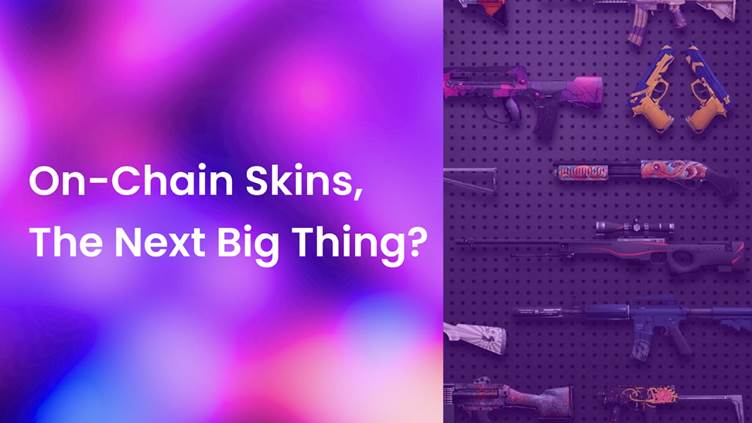Can the Gaming Skins Market Successfully Transition Into the Digital Asset Space?
0
0

It’s becoming more and more commonplace to explore the tokenisation of real-world assets (RWAs) in the last couple of years, with innovative, blockchain-based projects popping up in a variety of industries with the goal of replicating asset values on the blockchain. We’ve seen interest in this process in everything from real estate to fine art and commodities to intellectual property, with the growing belief that greater transparency, liquidity and accessibility are to be found through tokenisation. A huge market that is under exploration for tokenisation is gaming, with some incredibly innovative projects popping up in this sector.
In the booming global gaming market, valued at $250bn in 2022, where virtual items like skins contribute a massive $50bn, the demand for a fairer system is growing. Imagine a world where gamers can own and trade their skins and other in-game items valued at millions as NFTs on secondary marketplaces!
Currently, game developers run private markets, holding tight control over these virtual goods. They’re reaping massive profits from this monopoly, while gamers are left with only a license to their purchased items. Put simply, players don’t truly own their skins or in-game assets, even though they’ve spent their own hard-earned money on them. Access to these digital treasures can be snatched away anytime, a raw deal for gamers indeed. But with the rise of NFTs, players are pushing for real ownership and a more equitable market in the gaming world.
There may be light at the end of the tunnel for these gamers, arriving soon and shining even brighter than expected, provided MetaZero lives up to its promise and delivers the platform they’re building. The team are not simply developing a gaming asset tokenisation platform but going one step further down the ownership and freedom road and enabling gamers to tokenise the assets themselves. The timeline for the project begins with CS2 assets – with a market valuation in excess of $3.5bn as of July 2023 – and expands into further gaming markets.
Looking into the MetaZero protocol, it’s clear that the core focus is on removing the barriers long cemented by the monopolisation by titans of the gaming industry and creating a free market for asset trading, investment and speculation. Through Vortex, a part of the MetaZero platform, an asset owner can tokenise their own assets, during which the original asset is locked safely in a designated vault following authentication and receives an ONFT mirroring the original asset and its value, effectively removing the ownership barrier that has long been in their way.
You may have noticed the use of ONFT above, and this is yet another great feature the team have implemented into their ecosystem. Using LayerZero‘s omnichain technology, a user’s assets can be tokenised onto the blockchain of their choice, opening up maximum liquidity opportunities. Their inaugural digital asset collection, the MetaZero Genesis Collection, has already begun, with buyers receiving a host of benefits along with the off-chain game asset represented by the ONFT.
Given the sheer size of the market in play here, MetaZero and other projects heading in this direction should be monitored closely, with single CS2 assets known to be traded for six-figure sums indicating the increase in the digital asset market they can create.
0
0






